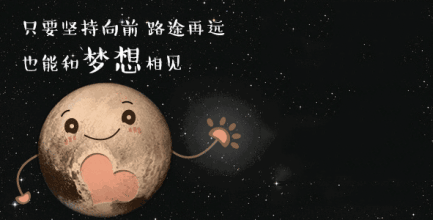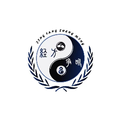Editor’s Note: The understanding of “Shang Han” and “Shang Han Lun” has varied among physicians throughout history, akin to Shakespeare’s saying: there are a thousand Hamlets in a thousand people’s eyes (There are a thousand Hamlets in a thousand people’s eyes.); however, whether the interpretations of Shang Han Lun by nearly a thousand physicians are useful and reflect the intentions of Zhang Zhongjing is difficult to ascertain. Nevertheless, the annotations by physicians over the ages have incorporated the social and technological developments of their times, which is a characteristic of Traditional Chinese Medicine (TCM) adapting to societal changes. In the face of the rapid development of modern medicine, it is crucial to clarify the connotation of Shang Han and what types of diseases the “Shang Han Lun” is intended to treat.
“Shang Han refers to the narrow definition of Shang Han, while “Shang Han Lun” is a specialized text for treating acute and critical conditions.
The essence of “Shang Han Lun” has been a topic of much debate. Some scholars believe it is a specialized text for treating externally contracted febrile diseases; however, others argue that “Liujing Qian Baibing” (Yu Genchu) suggests that “Shang Han Lun” includes not only external pathogens but also internal injuries and miscellaneous diseases. As Ke Yunbo stated, “Zhongjing’s six meridians legislate for all diseases, not exclusively for Shang Han. Shang Han and miscellaneous diseases are treated under the regulation of the six meridians,” indicating that it can also guide the treatment of internal injuries and miscellaneous diseases effectively. Additionally, some scholars assert that the core of the text lies in the formulas and their key indications, which capture the essence of “Shang Han Lun.” While all these viewpoints have clinical guidance value, clarifying the essence of “Shang Han” and “Shang Han Lun” is equally important and should not be vague.
2.1 “Shang Han” refers to the narrow definition of Shang Han, which is essentially an acute febrile infectious disease.
There is a distinction between broad and narrow definitions of Shang Han. The broad definition refers to all externally contracted diseases, as stated in “Nan Jing · Wu Shi Ba Nan”: “Shang Han has five types: wind stroke, Shang Han, damp warmth, heat diseases, and warm diseases, each with different sufferings.” The narrow definition refers to one of the five types of Shang Han, specifically the externally contracted febrile disease caused by cold evil. Current textbooks suggest that “Shang Han Lun” primarily discusses broad Shang Han. In practice, many patients with externally contracted febrile diseases can often be treated effectively with “one dose knows, two doses suffice,” or some bacterial and viral infections can self-resolve in about a week even without active treatment. Why, then, does “Shang Han Lun” contain so many acute and critical conditions and misdiagnoses? What exactly is the “Shang Han” described in “Shang Han Lun”? Is it broad Shang Han or narrow Shang Han? Research has shown that the “Shang Han” described in “Shang Han Lun” is absolutely different from the common cold, upper respiratory infections, pneumonia, etc. Its characteristics include five aspects.
2.1.1 “Shang Han” has a high mortality rate of 46.7%. The Sage of Medicine, Zhang Zhongjing, mentioned in the preface the background of the book’s creation: “My clan has many members, about two hundred. Since the Jian’an era, nearly ten years have passed, and among those who died, two-thirds were due to Shang Han.” Reflecting on the past losses and the inability to save those who died from Shang Han, I diligently sought ancient teachings, gathering various formulas, compiling “Su Wen,” “Jiu Juan,” “Ba Shi Yi Nan,” “Yin Yang Da Lun,” “Tai Lu Yao Lu,” and “Ping Mai Bian Zheng,” to create “Shang Han Za Bing Lun,” comprising sixteen volumes. Although I could not cure all diseases, I hope to reveal the source of the illness. If one can seek what I have compiled, they will have made significant progress.” From the literal meaning, it is not difficult to find that in Zhang Zhongjing’s time, the mortality rate caused by “Shang Han” was approximately 46.7%. Therefore, the numerous prescriptions described in this book are certainly not simple cases of cold and fever but likely treatment plans and clinical records that Zhang Zhongjing faced when dealing with these high-mortality diseases.
2.1.2 “Shang Han” is characterized by critical illness. In addition to the high mortality rate, critical illness is another major feature of “Shang Han.” In the original text of “Shang Han Lun,” there are many descriptions by Zhang Zhongjing regarding the assessment of efficacy and disease prognosis. Descriptions indicating a favorable prognosis include “main treatment,” “can be given,” and “can be treated,” while those indicating a poor prognosis include “not treatable” and “death.”
“Main treatment” means that a certain prescription is very likely to treat a specific disease syndrome effectively, as in “Shang Han Lun” Chapter 13: “Tai Yang disease, headache, fever, sweating, aversion to wind, Gui Zhi Tang (Cinnamon Twig Decoction) is the main treatment.” “Can be given” means that a certain prescription may not necessarily be effective, and the efficacy is uncertain; it may or may not work, as in “Shang Han Lun” Chapter 63: “After sweating, do not continue with Gui Zhi Tang. If sweating occurs and there is no high fever, it can be given with Ma Huang Xing Ren Gan Cao Shi Gao Tang (Ephedra, Apricot Kernel, Licorice, and Gypsum Decoction).” “Can be treated” means that there is still a chance for treatment, as in “Shang Han Lun” Chapter 288: “Shao Yin disease, diarrhea; if the diarrhea stops, aversion to cold and curled up, with warm hands and feet, it can be treated.”
“Not treatable” means that the hope for treatment is slim. As in “Shang Han Lun” Chapter 295: “Shao Yin disease, aversion to cold, curled up with diarrhea, cold hands and feet, not treatable.” In “Shang Han Lun,” there are two passages mentioning “not treatable.” One in the Yang Ming disease section (232) and one in the Shao Yin disease section (295). “Death” means that the disease is likely severe and untreatable, with a poor prognosis, as in “Shang Han Lun” Chapter 296: “Shao Yin disease, vomiting, diarrhea, agitation, cold extremities, death.” In “Shang Han Lun,” there are 22 passages mentioning “death.” Among them, the Tai Yang disease section has 3 (132, 133, 167), the Yang Ming disease section has 3 (205, 210, 212), and the Shao Yin disease section has 7 (296, 297, 298, 299, 300, 309, 315), while the Jue Yin disease section has 9 (333, 343, 344, 345, 346, 347, 362, 368, 369). It is evident that the Shao Yin and Jue Yin sections have many death cases. The progression of the disease at least reaches the Shao Yin and Jue Yin stages, at which point the condition is critical, and the righteous qi is weak, with a risk of reversal and collapse at any moment. This also explains why Zhang Zhongjing stated in the preface, “Since the Jian’an era, nearly ten years have passed, and among those who died, two-thirds were due to Shang Han.”
2.1.3 “Shang Han” is characterized by large-scale epidemics and rapid transmission, with a high possibility of infectious disease. In the preface of “Shang Han Lun,” the characteristics of the disease at that time are also described: “Suddenly encountering the evil wind qi, suffering from an unusual disease, calamity arrives, and one is left trembling, helpless, and defeated.” This indicates a sudden encounter with evil qi, leading to severe illness and rapid progression, rendering physicians powerless. The contemporary writer Cao Zhi recorded the epidemic situation at that time in “Shuo Yi Qi,” stating: “In the 22nd year of Jian’an, the epidemic qi was prevalent, every household suffered from the pain of corpses, and every room echoed with cries of sorrow; some suffocated behind closed doors, while others perished with their families.” This clearly points out that the prevalent disease at that time was epidemic qi. From this description, it is not difficult to see that the characteristics of large-scale epidemics and rapid transmission are very similar to those described in the preface of “Shang Han Lun.” Therefore, it is evident that the “Shang Han” at that time was certainly not an ordinary externally contracted febrile disease but rather a type of febrile disease that could lead to acute critical conditions, high mortality rates, large-scale epidemics, rapid transmission, and a high possibility of being infectious.
2.1.4 “Shang Han” easily leads to bleeding, oliguria, and shock. In the passages of “Shang Han Lun,” there are many symptoms that are rarely encountered in the treatment of ordinary externally contracted febrile diseases, including bleeding, oliguria, and shock.
The text of “Shang Han Lun” describes bleeding in various terms, including “epistaxis,” “loss of blood,” “hemorrhagic diarrhea,” “blood from below,” “clear blood,” “hematemesis,” “bloody stools,” “purulent blood,” “moving blood,” and “purulent sputum.” In various textbooks, it is often assumed that blood is “red sweat,” and the appearance of epistaxis after sweating in externally contracted diseases is a sign of recovery. This statement is not supported. Firstly, I have clinically used Ma Huang (Ephedra) to treat acute critical conditions, and the maximum dosage of Ma Huang can reach 30 g, yet I have never encountered a case of “red sweat.” Why is there such a significant difference between ancient and modern times? Is it due to differences in constitution? Or is it a quality issue with the medicinal materials? Or something else? Secondly, even if epistaxis is a precursor to recovery after sweating, does that mean that hematochezia, hematemesis, and purulent sputum are also signs of impending recovery? In modern clinical practice, this clearly does not meet discharge criteria. As the attending physician, one would at least recheck the complete blood count and DIC to assess coagulation function after the patient presents with bleeding symptoms. Thirdly, epistaxis is commonly seen in hypertensive emergencies leading to rupture of nasal mucosal blood vessels; could the epistaxis in ancient texts be due to the use of high doses of Ma Huang causing a sudden increase in blood pressure? Fourthly, could the bleeding symptoms be related to coagulation dysfunction? Why are bleeding symptoms more common in the Shao Yin disease section? Research has found that the bleeding symptoms in “Shang Han Lun” are likely associated with disseminated intravascular coagulation (DIC).
Similarly, the descriptions of oliguria in “Shang Han Lun” include “difficult urination,” “little urination,” and “no urination.” Is oliguria a serious condition in clinical practice? Does it lead to adverse clinical outcomes? Historically, textbooks and commentaries have rarely delved into the issue of oliguria, often glossing over it with TCM terms like “fluid deficiency” or “water retention.” The reason may be related to insufficient attention to the clinical significance and importance of urine output. In intensive care units, one of the most closely monitored indicators is the patient’s input and output. Oliguria is defined as a 24-hour urine output of less than 400 mL, with common causes including prerenal (decreased effective blood volume, decreased cardiac output, renal vascular disease), renal (glomerular disease, tubular disease), and postrenal (mechanical urinary obstruction, external pressure on the urinary tract, etc.). According to the principles stated in “Su Wen · Zhi Zhen Yao Da Lun,” “carefully observe the pathogenesis, each in its category; if present, seek it; if absent, seek its cause,” and “must address the main issue while prioritizing its cause,” when studying “Shang Han Lun,” if one can repeatedly analyze the causes of oliguria from these three aspects, whether it is due to insufficient volume, heart failure, renal failure, obstruction, or others, one will certainly find the crux of the problem. Research has found that the oliguria and edema mentioned in “Shang Han Lun” are mostly related to renal failure.
Descriptions of shock in “Shang Han Lun” include “reversal,” “cold extremities,” “reversal cold,” “cold diarrhea,” “cold hands and feet,” and “cold extremities.” Reversal generally refers to sudden fainting or cold extremities. However, in “Shang Han Lun,” it is clearly stated that “reversal refers to cold extremities,” indicating that reversal often refers to cold hands and feet, which in terms of pathogenesis generally includes Yang depression and reversal. However, what is the clinical significance of suddenly experiencing cold extremities in externally contracted febrile diseases? Is it merely due to Yang qi being constrained and unable to circulate freely to the extremities, leading to peripheral circulatory failure? Clearly, it is not! If during rounds, a patient who was previously febrile suddenly presents with cold extremities, it requires high vigilance. What is causing the deterioration of peripheral circulation? Is it an exacerbation of infection? Is it due to insufficient volume? Is it pump failure? Or is it shock? In “Shang Han Lun · Bian Jue Yin Bing Mai Zheng Bing Zhi,” the passages related to “reversal” often accompany “Shang Han fever,” “diarrhea,” and “thin pulse,” indicating that fever suggests a concurrent infection, diarrhea suggests insufficient volume requiring fluid resuscitation, and a thin pulse also indicates possible volume depletion and hypotension. Therefore, research has found that the “reversal” in “Shang Han Lun” is likely associated with infectious shock and cold shock. The mortality rate of reversal syndrome is high, and the prognosis is poor, which also aligns with the outcomes of shock.
2.1.5 “Shang Han” is essentially an acute febrile infectious disease. From the above analysis, it can be concluded that “Shang Han” is an acute febrile infectious disease characterized by critical illness, high mortality, large-scale epidemics, rapid transmission, and a tendency to cause bleeding, oliguria, and shock. Some scholars have investigated and found that “Shang Han” belongs to “cold epidemics,” likely referring to epidemic hemorrhagic fever (hemorrhagic fever with renal syndrome). This is a serious infectious disease caused by the epidemic hemorrhagic fever virus (Hantavirus), primarily transmitted by rodents, characterized clinically by fever, bleeding, congestion, hypotensive shock, and renal damage. The typical incubation period is 2 to 3 weeks, and the clinical course is divided into five phases: febrile phase, hypotensive shock phase, oliguria phase, polyuria phase, and recovery phase. The prognosis is poor, with a mortality rate as high as 20% to 90%. This speculation has its rationale. Historical records indicate that during the Three Kingdoms period, the climate was harsh, and Wei ruler Cao Pi repeatedly canceled military parades along the Huai River. In the poor sanitary conditions of that time, living in close quarters with rodents made it easy to contract the disease.
2.2 “Shang Han Lun” and “Jin Gui Yao Lue” are not divided by external and internal injuries, but rather by the criterion of whether they are infectious diseases.
“Liujing Bian Zheng Lun Shang Han, Zang Fu Bian Zheng Lun Za Bing,” this is the current consensus among experts regarding the focus and differentiation methods of “Shang Han Lun” and “Jin Gui Yao Lue,” indicating that “Shang Han Lun” is a specialized text discussing externally contracted febrile diseases, primarily using the six meridian differentiation method, while “Jin Gui Yao Lue” discusses internal injuries and miscellaneous diseases, primarily using organ differentiation. However, the question arises: is external/internal truly the basis for the differentiation in “Shang Han Lun” and “Jin Gui Yao Lue?” Clearly, it is not. Because in “Jin Gui Yao Lue,” there are numerous discussions of externally contracted diseases, such as “Lung atrophy, lung abscess, cough, and shortness of breath” in Chapter 7 and “Phlegm and cough disease, pulse diagnosis and treatment” in Chapter 12. So, what distinguishes the external pathogens in “Shang Han Lun” from those in “Jin Gui Yao Lue?” Research has found that the criterion for differentiation between “Shang Han Lun” and “Jin Gui Yao Lue” is whether it is an acute febrile infectious disease.
2.3 “Shang Han Lun” is a specialized text for treating acute critical conditions.
Based on the above research, it can be concluded that the diseases described in “Shang Han Lun” are not broad Shang Han, not all externally contracted febrile diseases, but rather narrow Shang Han, specifically referring to a certain type of disease that is essentially an acute febrile infectious disease and acute critical condition. “Shang Han Lun” describes the pathological characteristics and treatment plans for different stages of this disease, making it a specialized text for treating acute critical conditions. The Sage of Medicine, Zhang Zhongjing, can be regarded as one of the early experts in emergency and critical care medicine in Chinese history.
3 Decoding the Classic Passages of “Shang Han Lun” Based on CCU Critical Cases
The passages of “Shang Han Lun” are concise and profound; a cursory reading often fails to grasp their meaning. Even after reciting them a hundred times, one can only “interpret the Sage’s intentions through the reader’s perspective,” remaining unclear. However, after encountering numerous acute critical patients in the CCU, re-reading the classics often reveals their meanings, allowing the essence to emerge.
This article was primarily published in the Chinese Journal of Traditional Chinese Medicine in June 2018.
Reference Reading
“Shang Han Lun” and Acute Critical Conditions – How to Decode and Interpret “Shang Han Lun”?
Thank you for your attention and for sharing.



